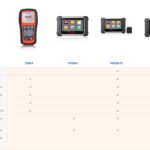The Autel Evo Battery Hub provides a convenient way to charge multiple batteries, but it has its limitations. Users often find the charging time slow, especially when charging multiple batteries simultaneously. The hub charges two batteries at a time, but each battery receives only half the charging power, extending the overall charging duration. This can be inconvenient for users who need to charge batteries quickly, especially when working remotely.
A common alternative is to use third-party multi-chargers, which often claim to charge batteries faster. However, caution is advised when using these chargers. Lithium Polymer (LiPo) batteries require specific charging protocols, and using incorrect charging methods can damage the batteries or even pose a fire hazard. Autel and DJI, reputable drone manufacturers, employ sophisticated charging techniques to ensure safety and battery longevity. Their charging systems, while potentially slower, prioritize safe and balanced charging over speed.
Third-party multi-chargers may not adhere to these stringent safety standards. They might lack the necessary balancing circuitry, leading to uneven charging, reduced battery lifespan, overheating, and potential fire risks. It’s crucial to understand that truly parallel charging, where each battery receives full charging power simultaneously, is rare. Most multi-chargers, even those marketed as parallel, employ a sequential or staggered charging approach.
For optimal safety and battery performance, using the manufacturer’s provided charging solutions is recommended. While the Autel Evo battery hub might have slower charging times, it ensures safe and balanced charging, ultimately prolonging the life of your batteries and mitigating potential hazards. Planning ahead and charging batteries the night before a planned flight can eliminate the need for rushed charging and reliance on potentially risky alternatives. Investing in official Autel batteries and chargers is a worthwhile investment for ensuring safety and maximizing the performance and lifespan of your drone equipment.

